Please select your location and preferred language where available.
Building the Next-generation Green Data Center from Japan! - Reporting from the Frontlines of SSD and Optical Technology Innovation
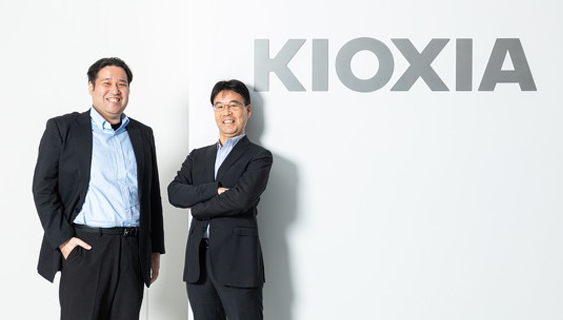
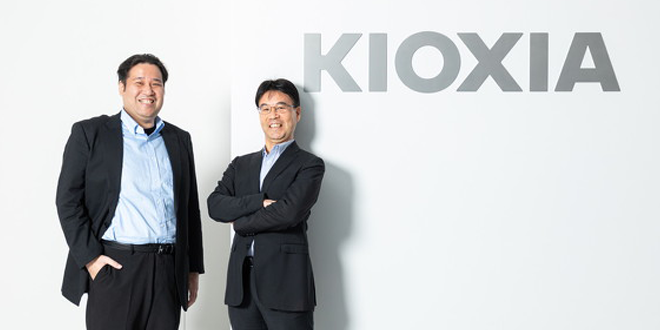
August 7, 2025
In today's information society, it has become impossible to discuss everyday life and business growth without talking about technology. How will KIOXIA flash memory and SSD products, which manage data essential for the evolution of society and problem-solving, enable us going forward? In this article, we refer to such technologies as “essential technologies” and explore their potential.
We view social media posts during our commute and check AI-generated minutes after online meetings during the day. During dinner, we stream dramas, and make purchases items on sale on e-commerce sites before going to bed. We rarely think about the data centers running behind the scenes of these convenience services.
Data centers are a hot topic right now. The market for data centers is overheating with ballooning demand in our internet society. Consequently, data centers are consuming massive amounts of power to run and cool servers. This presents a problem in terms of the natural environment and sustainability.
To help Japan take the lead on solving this issue, the Ministry of Economy, Trade and Industry (METI) and the New Energy and Industrial Technology Development Organization (NEDO) launched the “Next-generation Digital Infrastructure Construction” project. The project goal is to develop game-changing, advanced technologies to significantly improve energy-saving performance and make the next-generation green data center a reality.
Can Japan spur innovation in the data center infrastructure field? We interviewed representatives from NEDO and Kioxia Corporation (Kioxia), a semiconductor manufacturer participating in the Next-generation Digital Infrastructure Construction project using optical technology, next-generation green data center technology development, and the development of broadband optical SSDs.
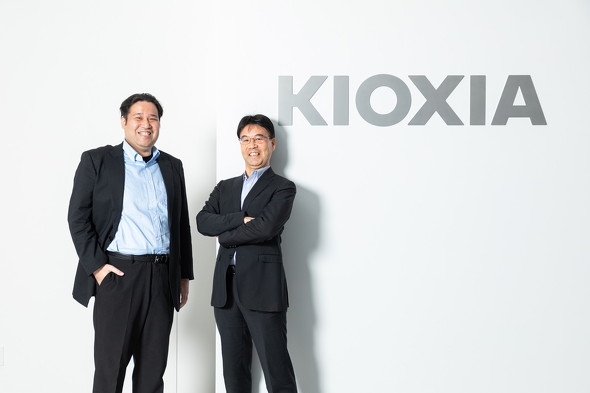
Total power consumption of data centers reaches national scale – Japan’s challenge in technology innovation
According to NEDO, global data traffic is increasing 30% per year. To meet the rapidly increasing demand for data, there is a boom in new data center construction, and power consumption continues to increase. Generative AI has further accelerated this trend. According to the Electricity 2024 report announced by the International Energy Agency (IEA) in 2024, total global power consumption of data centers is increasing due to the adoption of AI and crypto assets, and may reach a level that is comparable to the domestic power consumption of Japan in 2026.
Given this situation, the project to develop the next-generation green data center will strive to reduce the power consumption of newly constructed data centers by 40% or more compared to 2021. The developed energy saving technologies will be diffused to 40% of newly constructed domestic data centers by 2030 and 100% by 2050, with the goal of fostering a decarbonized society.
Project lead Shun Ando of NEDO points out that the situation has completely changed since the project started in 2021. At the time, data center demand had increased due to the growing use of cloud computing for DX. However, power consumption is currently increasing at an accelerating rate due to the generative AI boom. He says that they are engaging in a wide-ranging discussion about the targets, system configuration, related technologies, and more, based on the current situation.
“It is true that the importance of green data centers has increased. We are trying to see how far it can go, not just as a pipe dream but as a line that can be implemented in society. The best result for NEDO would be if we can demonstrate the results of the project in Japan, as well as overseas, together with leading Japanese companies.”
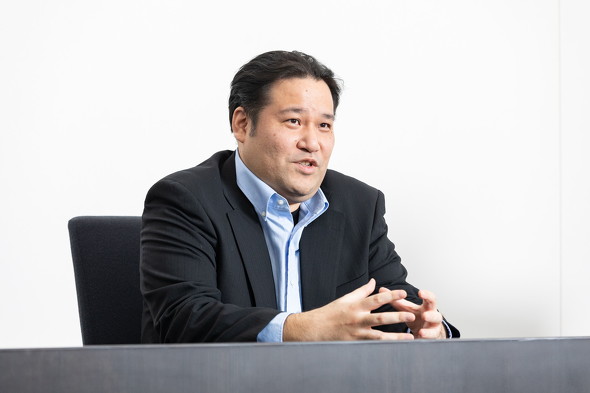
Japanese semiconductor manufacturer Kioxia targets energy savings with broadband SSDs and optical technology
Japan's leading companies are tackling the challenge of developing the next-generation green data center, including Fujitsu*1, AIO Core, Furukawa FITEL Optical Components, Kyocera, NEC, and Kioxia. When it comes to data center performance, people tend to focus on GPUs and CPUs. However, safe and efficient storage is essential to analyzing big data and training large language models using massive amounts of data. Kioxia plans to make the next-generation green data center a reality through innovations in storage technology.
Kioxia is a semiconductor manufacturer that produces flash memory and SSD products. Kioxia storage products are used in everything from smartphones to data centers, and even on the International Space Station. These products have earned a high level of trust as a platform that supports society and can be described as an “essential technology.”
“We are working on the practical application of broadband optical SSDs, which combine the high data transfer capability of broadband SSDs with optical technology to make the next-generation green data center a reality.” -- Masafumi Takahashi of Kioxia
These broadband optical SSDs have the potential to significantly change how data centers operate.
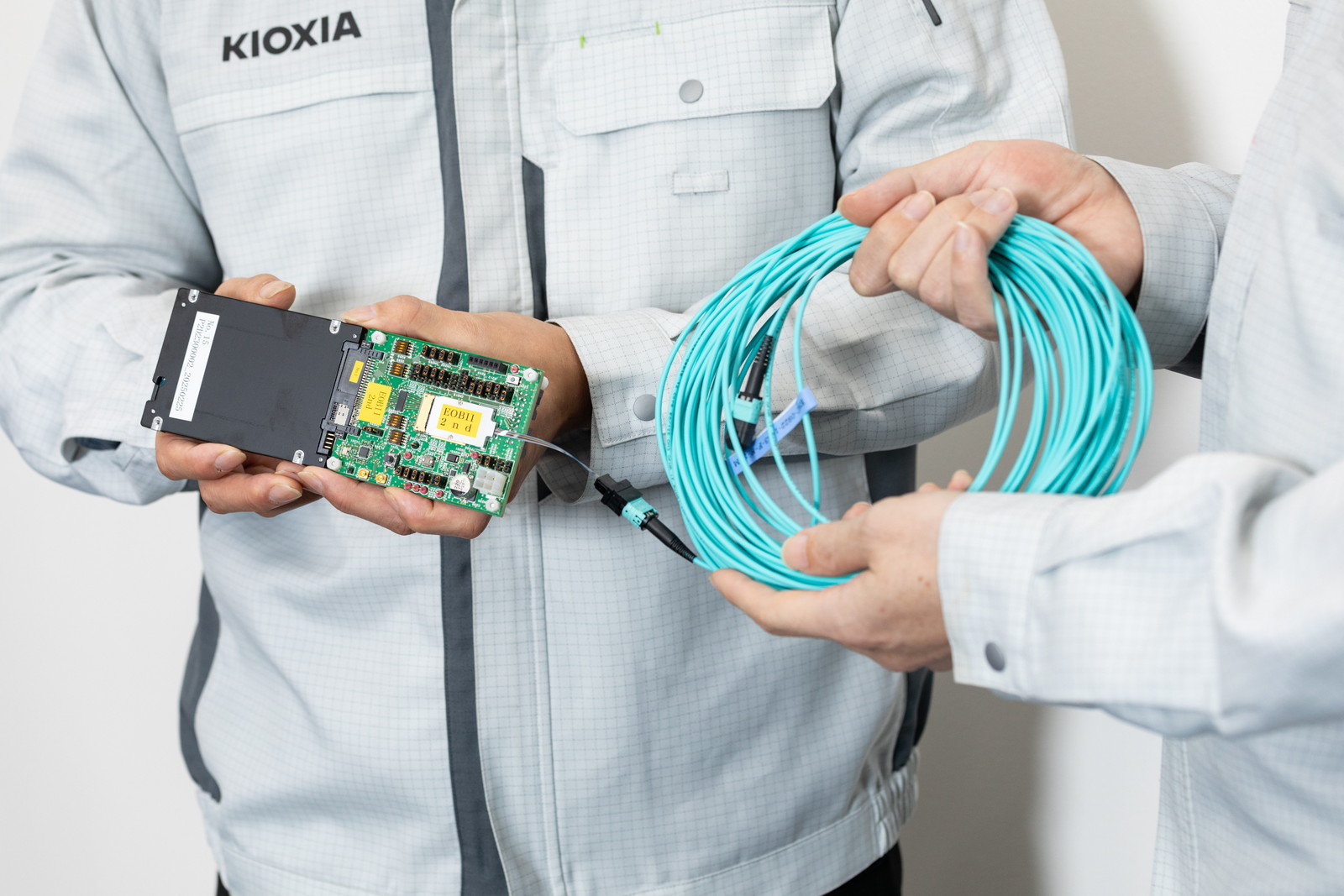
Rethinking the configuration of data centers: what the next generation will look like
Before explaining the shape of the next-generation green data center, let's review the current situation. Current data centers are configured with a large number of servers installed on one floor. Servers with different frequencies of use generate different amounts of heat, which makes it difficult to fine-tune the temperature on the floor according to operating conditions. Takahashi explains that while there are differences in the amount of heat generated by components such as the CPU, GPU, storage, and memory concentrated within a server, the only option is to cool the server according to the maximum amount of heat generated, which leads to waste.
“We need to rethink this situation, starting from the data center configuration. Options for improving energy efficiency include reducing power consumption of components, as well as transitioning to more efficient cooling methods. The latter is a key advantage of distributed data centers, called ‘disaggregated computing,’ which is one of the goals of this project.” (Ando)
The concept behind disaggregated computing involves building an extremely large-scale server system that isolates and houses only the CPUs, only the GPUs, and only the storage, connected by high-speed communications. By assembling clusters of common components and elements that make up the same device or system, it becomes possible to implement cooling based on heat generation for only those components, which makes it easier to optimize the power consumption for cooling than before.
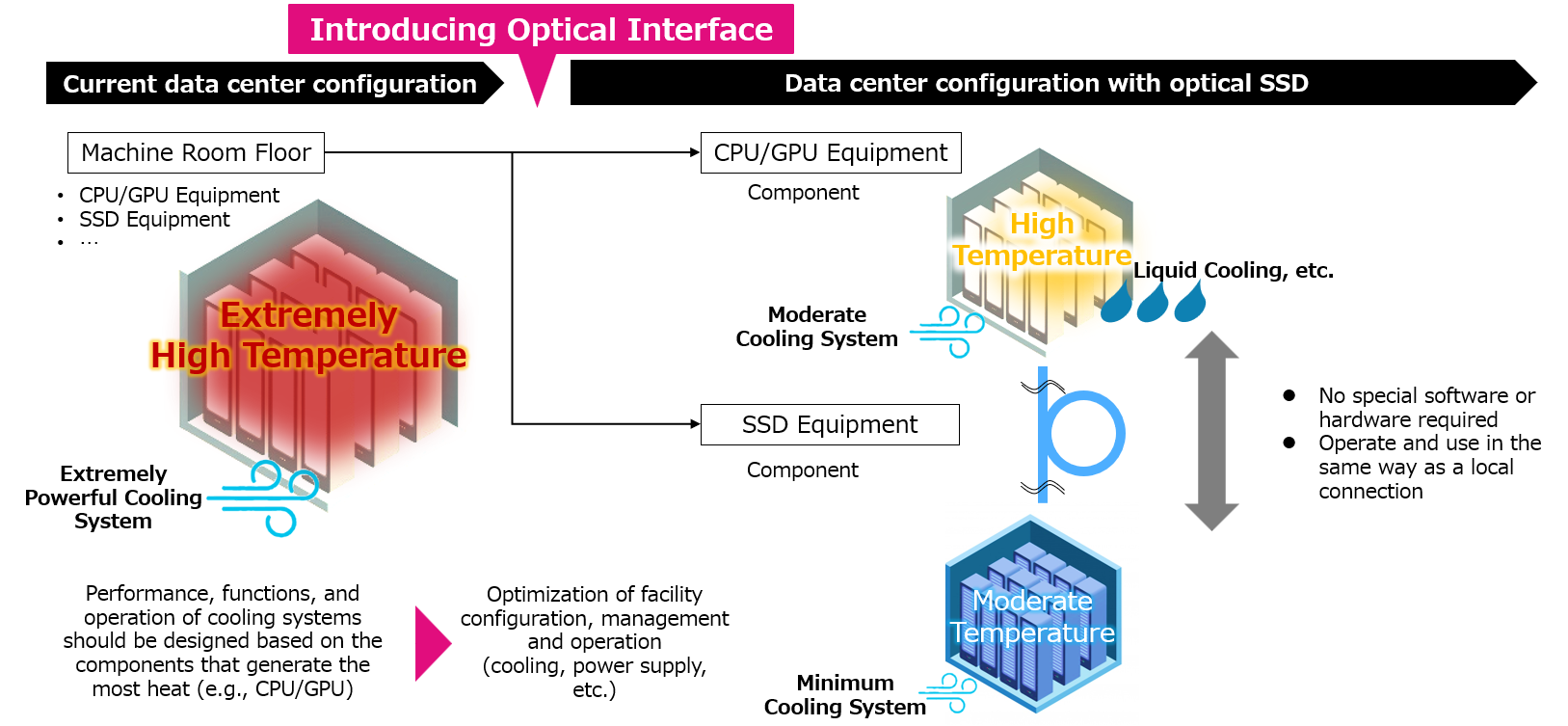
If this method is adopted, computer utilization efficiency increases. Under the current situation, “if the CPU fails, the entire server is replaced” or “only the GPU is running on that server,” which leads to waste. However, with this new disaggregated computing method, it becomes possible to “replace just the failed CPU” or “use only the GPU resources that are needed.” This approach also offers security advantages, such as tightly guarding the storage which can contain important information and storing it in a physically isolated facility. Ando hopes that in the future, we might even have “an entire building dedicated to storage.”
How will optical technology help make the distributed data center a reality?
To make disaggregated computing a reality, the distributed GPUs, and storage, and other components must be connected with high speed communications. This is where optical technology can be of service. Current forms of data transmission use electrical signals. However, switching to optical signals will boost transmission speeds and increase the transmission range.
“Data transmission methods that use electrical signals require the CPU, storage, memory, and other main components to be connected over a physically short distance. As the interface speed increases, the distance between components becomes shorter and shorter. For that reason, most server elements were consolidated within a single ‘box.’ However, if they are connected with an optical cable, the distance can be extended to tens or hundreds of meters with almost no speed loss. This will remove the limitations on the physical placement of the chips and storage.” (Takahashi)
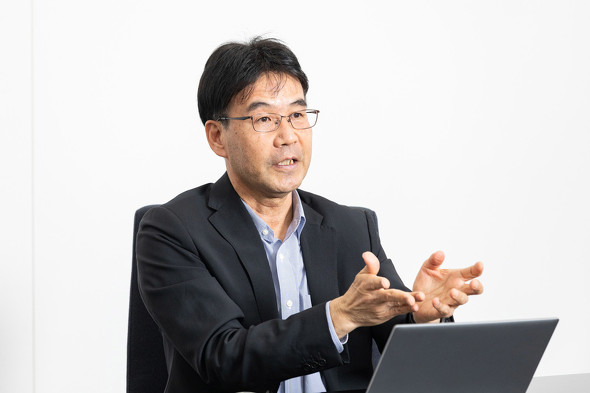
The transmission speed of optical signals is such that “nothing is faster than light,” so it can reduce latency during data storage access in big data analysis and AI training. Furthermore, optical signals are more resistant to noise than electrical signals, which prevents degradation during data transmission. Optical signals have a higher electrical efficiency than electricity, which makes them the ideal communication method for next-generation green data centers.
“Broadband optical SSDs will likely be a game changer, not only in information and communications infrastructures, but in all fields of IT. They are a type of technology that will not only save power in data centers, but also play an active role in ‘edge data centers’ in fields such as autonomous driving, telemedicine, and manufacturing sites which require low-latency and real-time data transmission.” (Ando)
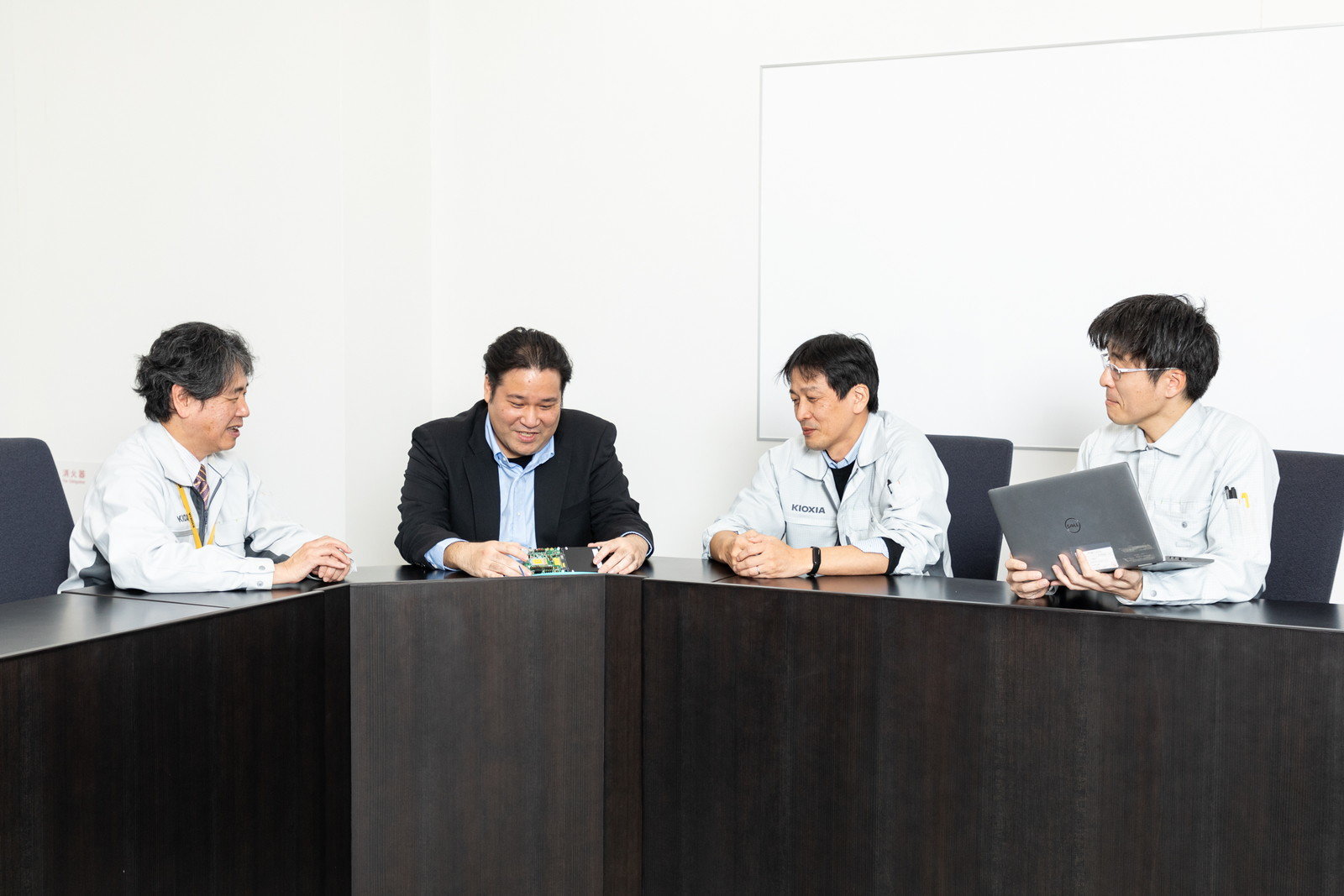
State of progress in reaching the 2030 goal
Based on the blueprint for the next-generation green data center, what is the state of progress as of March 2025? Ando explains that the technology development phase being carried out by the project member companies is progressing smoothly overall, and it is likely they will proceed to the demonstration test phase scheduled for CY2026 onwards. Ando adds, “Going forward, we will also discuss business development aimed at social implementation in parallel, and our goal of making the next-generation green data center a reality in 2030 remains unchanged.”
“For broadband optical SSDs, we will focus on research and development activities, including the development of related software through March 2026. We then plan to gradually shift to social implementation from April of that year. Next, we will work on practical implementation by combining and adjusting the technologies and equipment developed by each of the project member companies.” (Takahashi)
Takahashi recalls some cases where it was not so easy to combine broadband SSDs with optical technology. Because existing computers and storage equipment are designed to use electrical signals, they needed to be adapted to handle optical signals. Takahashi reveals that, “There are many challenges when working with optics, and we went through a process of trial and error.”
To solve these issues, Kioxia partnered with AIO Core, which is developing an optoelectronic integration technology that can handle both electrical and optical signals. One NEDO’s goals was to create collaborative ties between the project member companies. In addition to the six member companies*2, they have also established a council with participation from more than 50 data center-related companies, including cooling equipment manufacturers and construction companies. Ando explains that they are engaging in close discussion aimed at social implementation beyond the technology development.
Exhibiting the latest information at Expo 2025: What lies ahead?
As the Development of next-generation green data center technology project progresses, there are increasing opportunities to announce results to the public. NEDO and the member companies are planning to present the latest information from May 13 to 26 at the Future Life Experience “Future Society Pioneered by the Next-generation Green Data Center” at the Expo 2025 Osaka, Kansai, Japan opening in April 2025.
“The Expo is a forum for us to present the society of the future. We want to explain how data centers support our daily lives and how broadband optical SSDs and next-generation green data centers will lead to the future, as well as convey to the general public that an exciting future is coming.” (Ando)
In addition to the Osaka, Kansai Expo, NEDO plans to broadly announce their efforts concerning next-generation green data centers and broadband optical SSDs by exhibiting at events in Japan and overseas, including the CEATEC trade show. Kioxia also hopes to find seeds of overseas business opportunities. Takahashi explains, “We want to give back to Japan by bringing the results of this national project to fruition as a business.”
“We do not intend to limit the next-generation green data center technologies and knowledge created by this project to Japan alone. We will provide support so that Japan can demonstrate global leadership in this field.” (Ando)
With the data centers that support society facing the headwinds of a power consumption problem, it appears that the day will soon arrive when the innovation to solve this issue will emerge from Japan. We look forward to seeing how this situation unfolds going forward.
- : As of July 1, 2025, the division responsible for Fujitsu Limited's optical smart NIC has been spun off and established as a new company, 1FINITY Inc.
- : Following the spin-off of 1FINITY Inc., the number of companies participating in this project has grown to seven as of July 1, 2025.
Reprinted from: ITmedia NEWS
Reprinted from the April 22, 2025 edition of ITmedia NEWS
This article was reprinted with permission from ITmedia NEWS.